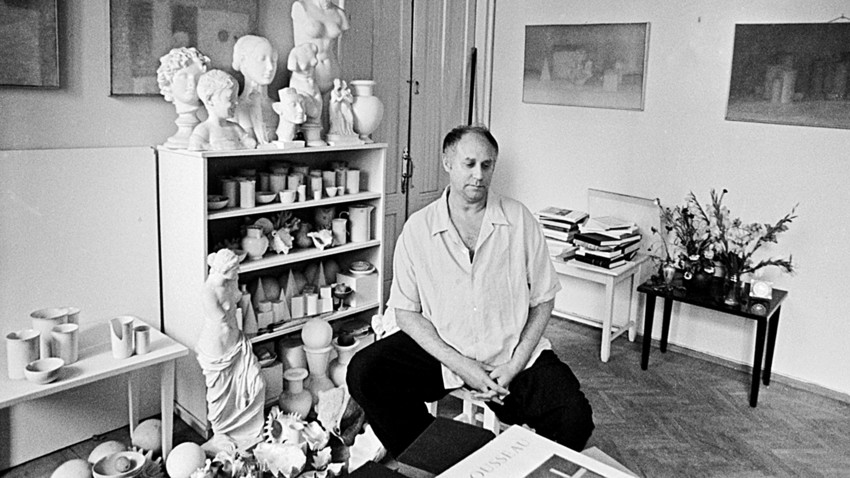
Weisberg in his Moscow studio, 1972
Igor Palmin/IN ARTIBUS FoundationEvery Thursday, the young, slightly nervy (as contemporaries recall) Vladimir Weisberg walked and creaked his way around the parquet floors of Moscow’s art galleries. He was not accepted into art school, so he studied drawing on his own here and there, just like his hero Cezanne, in fact
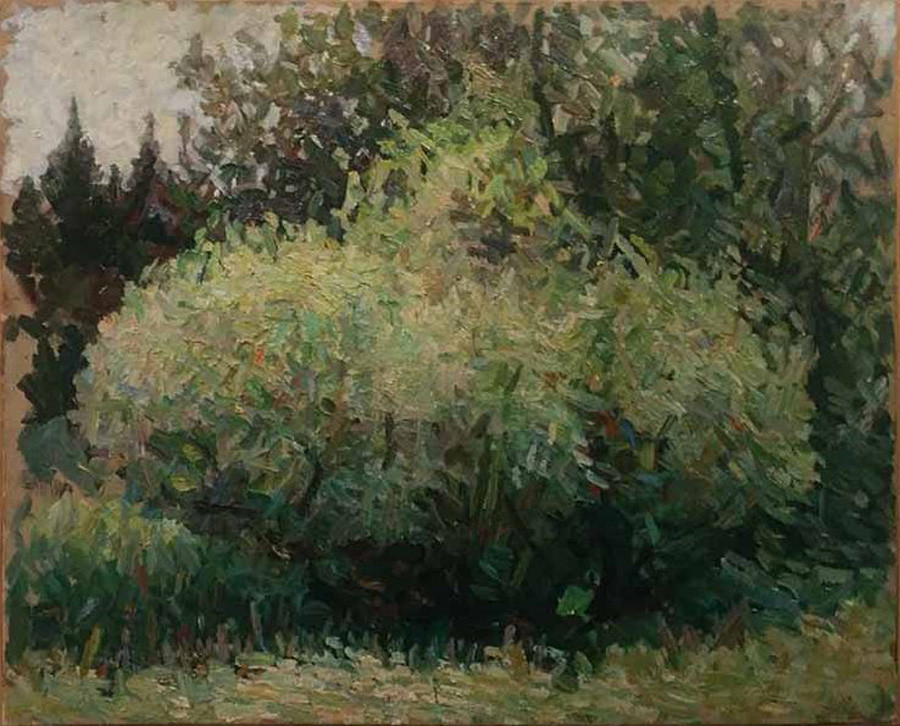
Vladimir Weisberg. Bush. 1947
Pushkin State Museum of Fine ArtsWeisberg’s youth was tumultuous: at the height of the Spanish Civil War, he attempted to flee the USSR for Spain to fight for the leftist Republicans against Franco. However, he was seized at Odessa Port whilst trying to board a ship, and sent straight to a psychiatric hospital in Moscow
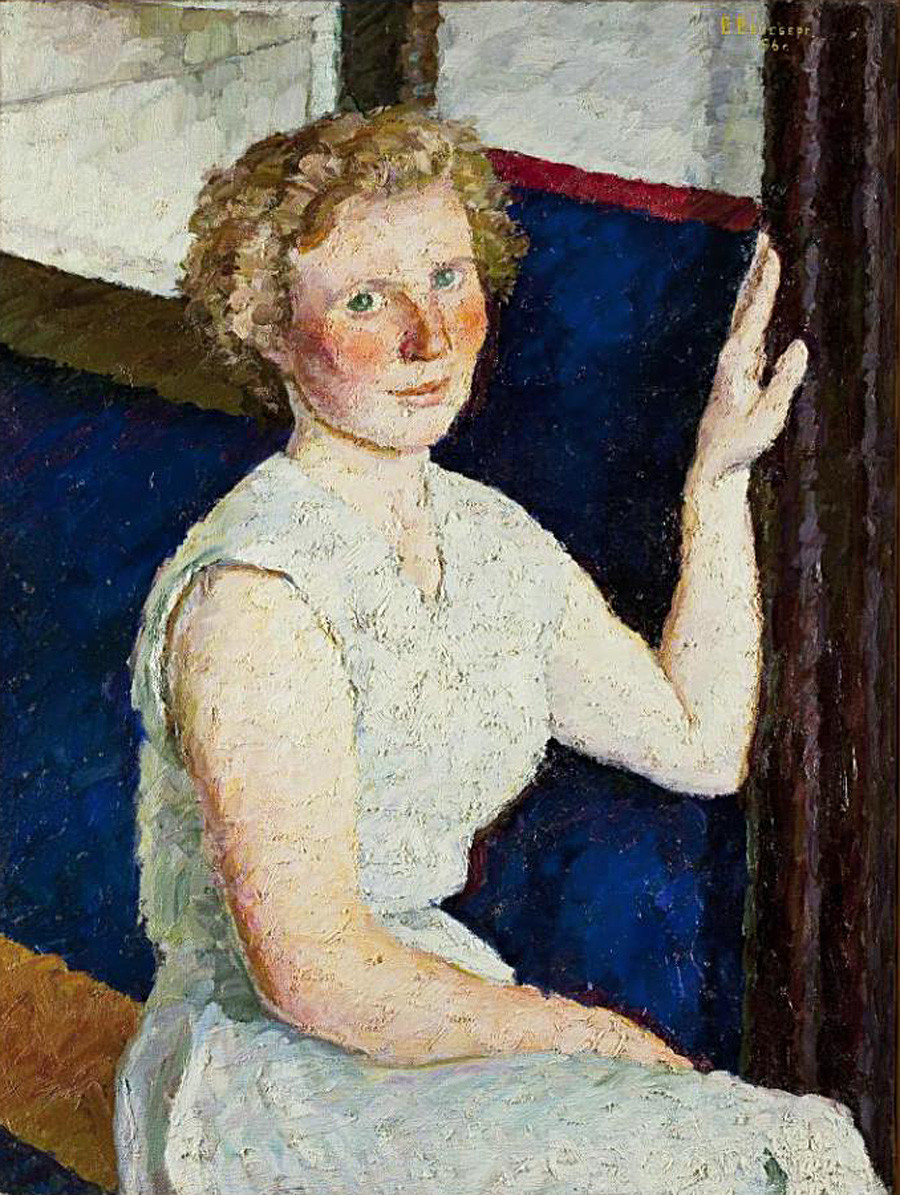
Vladimir Weisberg. Student. 1956
Pushkin State Museum of Fine Arts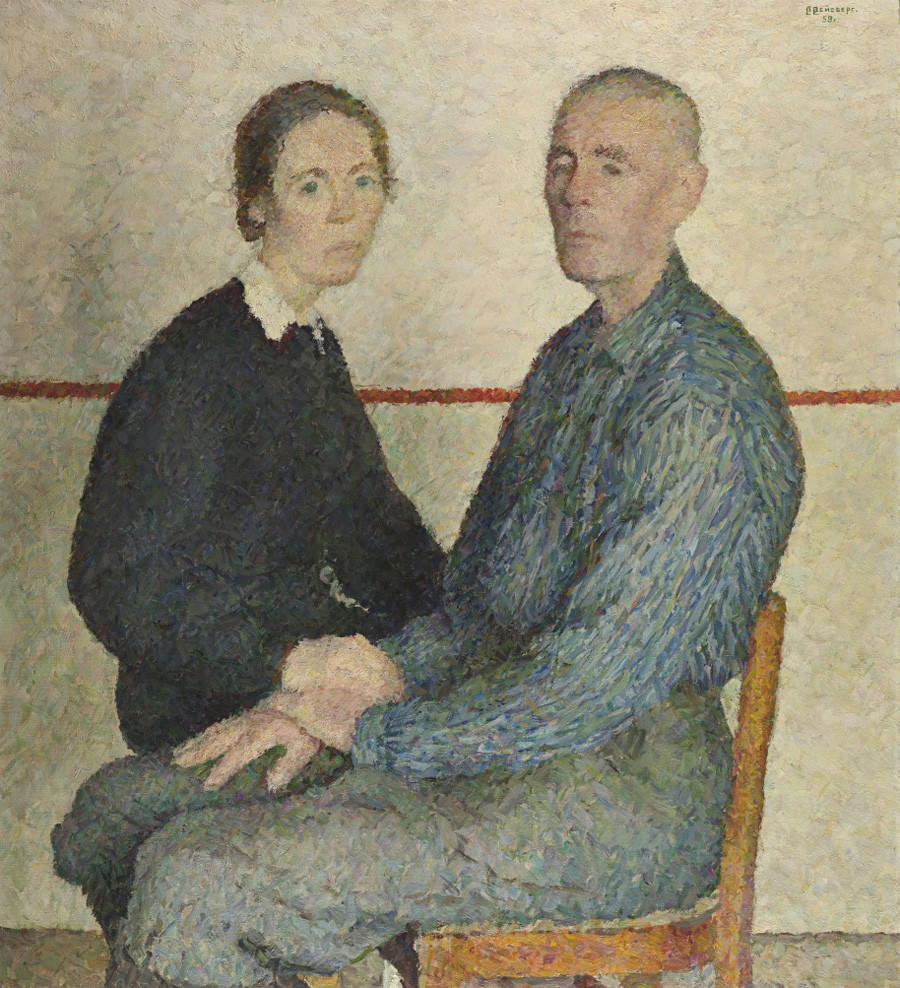
Vladimir Weisberg. Family. 1958
Pushkin State Museum of Fine ArtsAfter the war, Weisberg tried to enroll at the Surikov Art Institute in

Vladimir Weisberg. Composition with gauze. 1968
Collection of Inna BazhenovaHe would sit for hours on end in front of
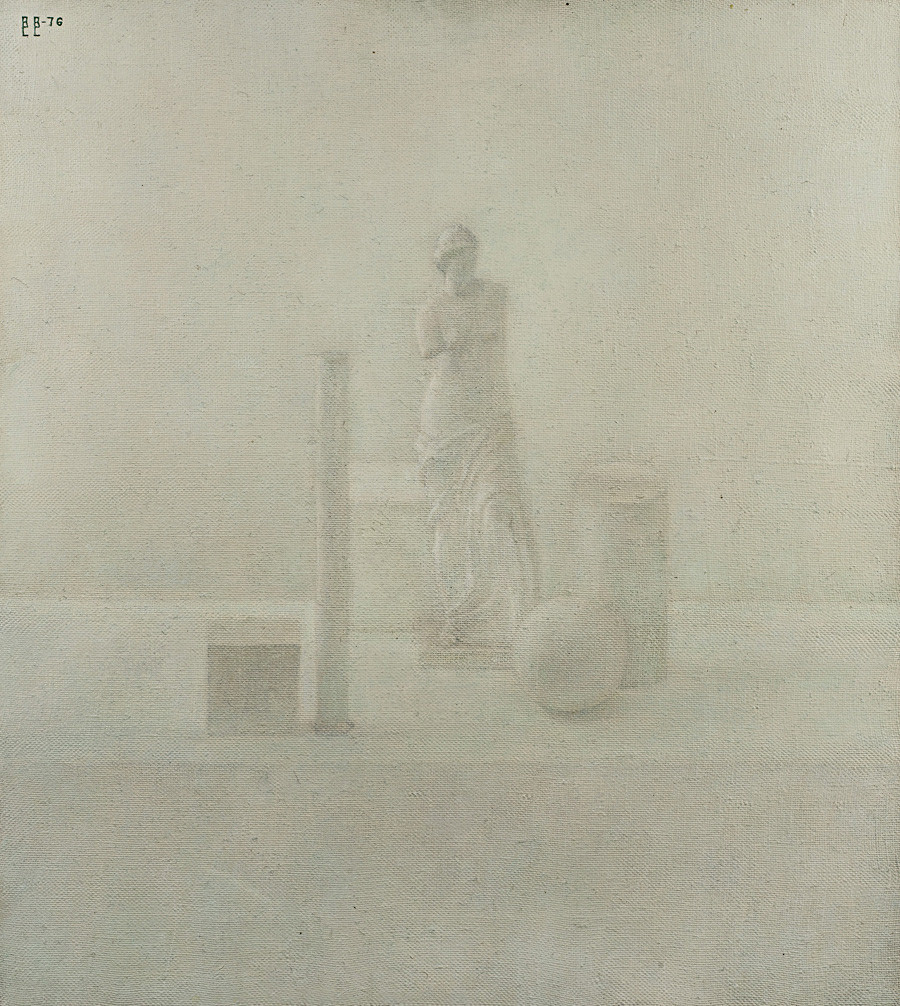
Vladimir Weisberg. Venus and Geometry. 1976
Collection of Inna Bazhenova
Vladimir Weisberg. Sitting nude. 1960
Collection of Inna BazhenovaIn 1963, critics and experts haughtily dismissed the first “white on white” as a rip-off of Italian artist Giorgio Morandi. But Weisberg most likely never even laid eyes on a work by Morandi. “The whole of Moscow rushed to see the new ‘white’ Weisberg,” wrote Vorobyev.
A master of “unofficial” art who never painted in the style of social realism with its smiling collective farmers and pumped-up workers, by the late 1960s Weisberg had nevertheless become a member of the Union of Artists of the USSR—a badge that at least allowed him to eke out a living from state commissions. On top of that, despite never receiving a formal art education, he began to teach painting
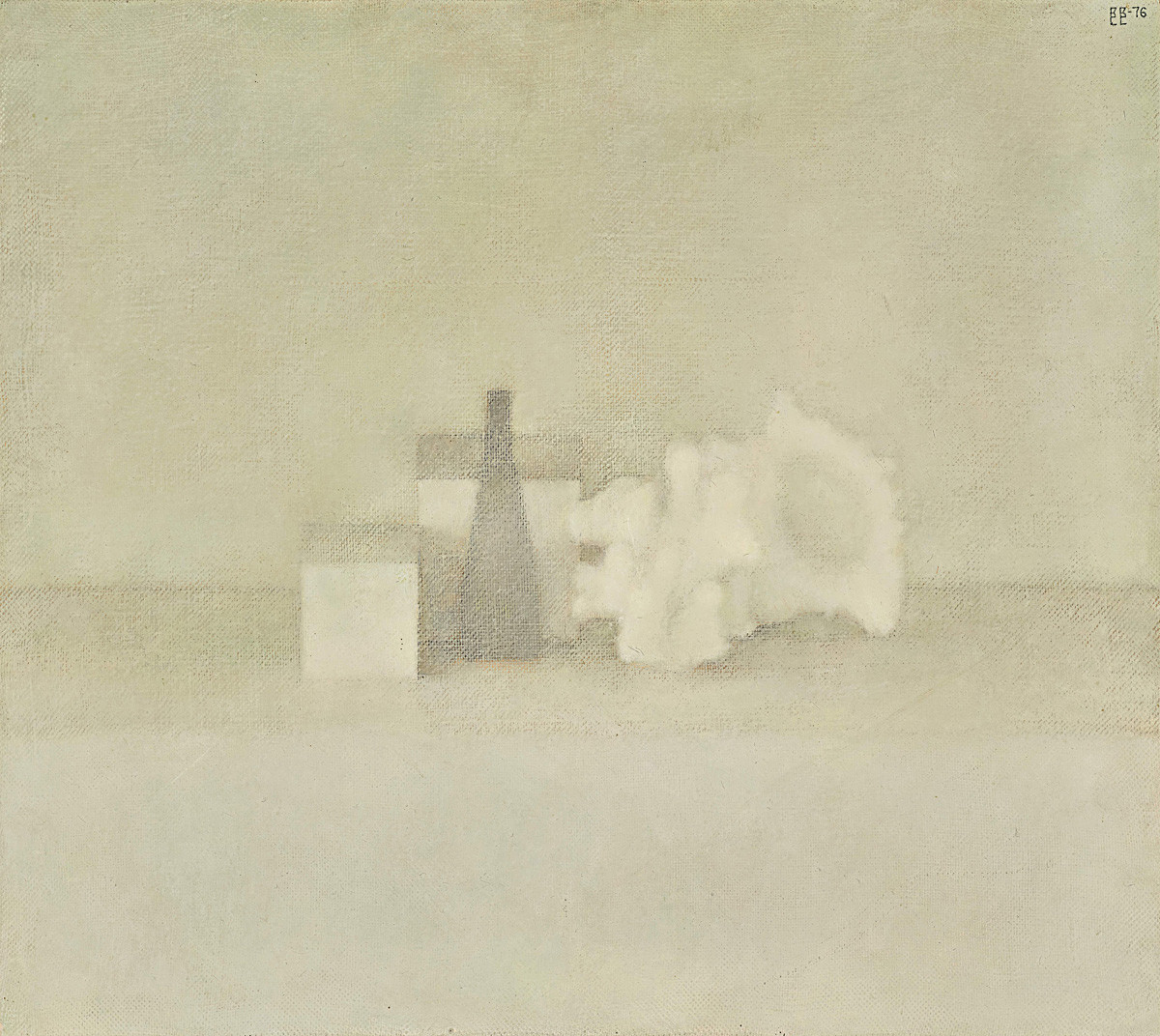
Vladimir Weisberg. Black vase. 1976
Collection of Inna Bazhenova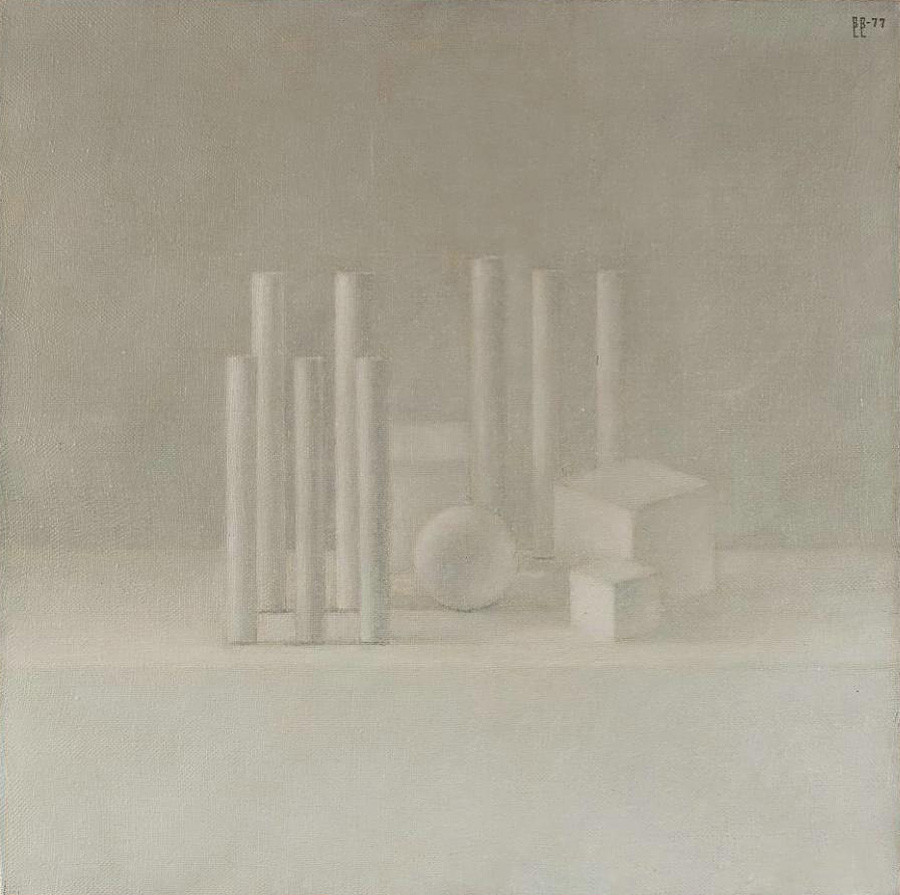
Vladimir Weisberg. Cubes and cylinders. 1977
Pushkin State Museum of Fine Arts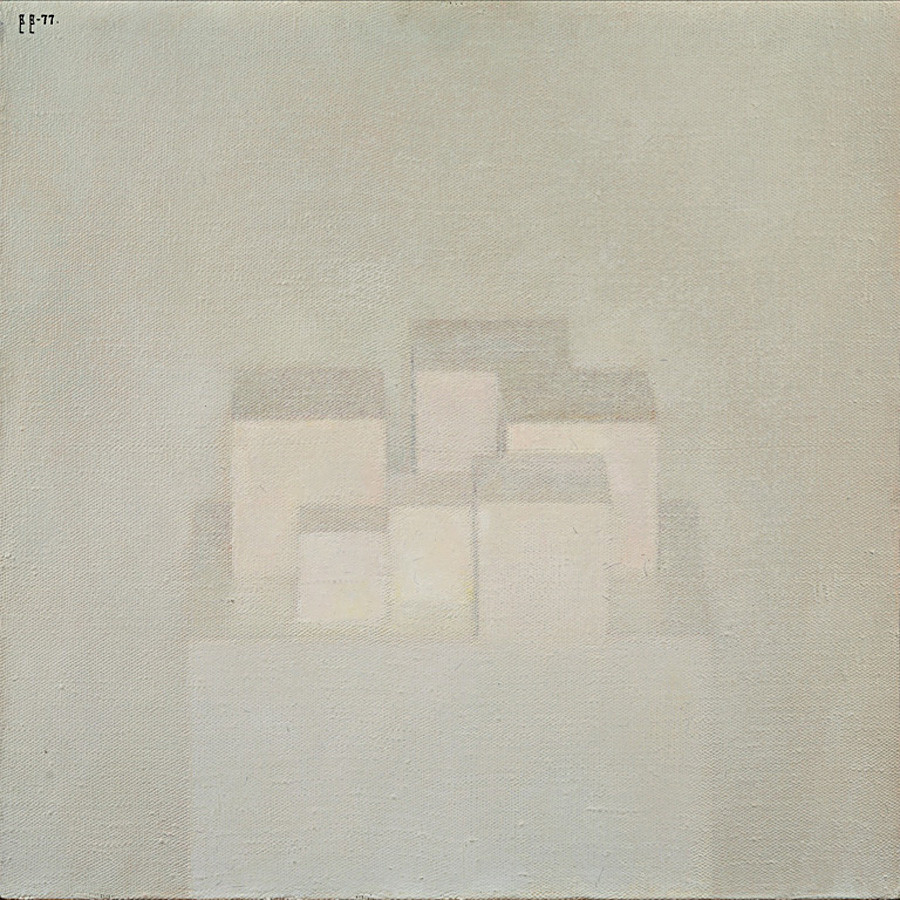
Vladimir Weisberg. Composition with six cubes. 1976
Pushkin State Museum of Fine Arts'Nothing but Harmony' exhibition of works by Vladimir Weisberg is on show at In Artibus Foundation in Moscow until July 28, 2019. For more information visit inartibus.org.
Read more: 10 of the most famous paintings every Russian knows
If using any of Russia Beyond's content, partly or in full, always provide an active hyperlink to the original material.
Subscribe
to our newsletter!
Get the week's best stories straight to your inbox